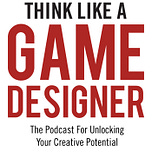About Cole
Cole Wehrle is one of the most innovative minds in board game design today. Cole is a partner at Leder Games, but best-known as the creator of Root, the woodland war game that redefined asymmetric play. Cole’s work reaches far beyond cute meeples and clever mechanics, with a background in history and a career in academia, Cole approaches game design as a way to explore systems of power, narrative ambiguity, and the complexity of human behavior. In this episode, Cole and I dive deep into the tension between control and chaos, discussing how historical research fuels good design, and why the best games ask players to grapple with uncomfortable truths. Whether you’re designing your first prototype or searching for deeper meaning in your work, this conversation will challenge you to think differently about what games can do.
Cole’s Links:
Ah-ha! Justin’s Takeaways
How to Manage Asymmetry: Root might is one of the most successful asymmetric strategy games ever made, but Cole points out that asymmetry is a design philosophy. Asymmetry can create deep immersion and endless replayability, but the cost is development time, playtesting, art, product logistics, and balance. Cole shares the techniques he uses to manage that complexity, from tracking player interactions to designing mechanics that allow factions to counter each other. If you want to build a game where everyone plays by different rules, the key is to make sure they’re still playing with each other, instead of just next to each other.
Losing Means You’re Learning: Cole argues that a well-designed loss can be more satisfying than an easy win. In Root, he deliberately builds systems that resist mastery on the first play. The factions are so different, and the interactions so dynamic, that early games are often full of failure—that’s intentional. The goal is to create moments where players feel the consequences of their choices. The experience he’s aiming for is when a player walks away from a loss not because they were close to winning, but because they understand what they should have done to win. That’s when you know your design is working.
Visual Language Can Subvert Expectations: Cole talks about the emotional power of a game’s art and physical presence. Root may look like a forest full of cuddly woodland critters, but the game is brutal, political, and full of betrayal. That contrast is intentional. Just like Blood Rage, which he describes as playing more like Sushi Go! than a traditional wargame, Root uses its aesthetic to lure players into a deeper strategic experience than they expected. The lesson here is that your visual design doesn’t have to match your mechanics one-to-one; it can contrast with them, soften them, or even trick the player into lowering their guard.
Show Notes
“I do visual design at the same time I’m doing game design.” (00:08:15)
Cole reflects on how redesigning old, clunky games taught him the fundamentals of layout and priority. Visual hierarchy (what the player sees first) isn’t just about aesthetics. For Cole, it’s a core design tool that shapes how players understand and interact with games. He explains how every design decision, from card size to information density, demands trade-offs. This drives his philosophy that great game design and great graphic design must evolve together, from the first sketch to the final board.
“The vast majority of games and play that exists in this world is confrontational and pretty aggressive. And that is actually very well-suited to play. […] So we kind of made a bet that people actually do want these types of games. They just don't usually like the aesthetics that are associated with them.” (00:23:08)
Cole discusses the emotional power of visual tone. In Root, adorable woodland creatures mask what is actually a ruthless, political game. That contrast, of theme and mechanics, shapes how players experience the world and each other.
“Asymmetry is expensive in every way a game can be expensive.” (00:29:32)
Cole and I discuss the cost, complexity, and creative power of asymmetric design. While asymmetric factions are expensive to develop and nearly impossible to balance, they create immense narrative depth. In Root, Cole designed factions with distinct goals and mechanics, and each has a handful of viable strategies. The magic, he says, is that “you can’t even lean into your differences, because there are only differences.” Cole designs for strategic variety, shifting dynamics, and the thrill of adaptation. Here, he puts the goal of lasting engagement over perfect balance.
“How you win informs and shapes the next game that is going to be played.” (00:54:09)
Cole explains the core design principle behind Oath. Instead of telling a fixed story, Oath builds a living narrative where the outcome of one session directly alters the next. Whether you scorched the world or built a thriving city, the board, deck, and victory condition evolve in response. Unlike a legacy game where you physically alter the game with stickers and other components, Oath offers players the opportunity to leave a lasting mark through play itself.
Check out this episode mentioned during Cole’s interview:















Share this post